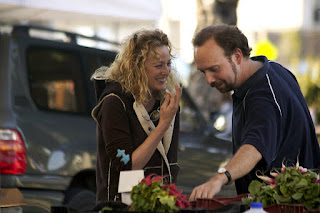 |
| China Camp 2008 |
In our case, we had one son, Jesse. He lived with his mother
two states away during the school year, so Don programmed the holidays and
vacation periods when he was with us solidly. Don wanted to give Jesse a sense
of what Don was already calling IRL, or what it was like “in real life.” In February,
for Jesse’s birthday, we usually went skiing and snowshoeing up in Idaho. One
spring break we went to Europe. In the summer, we camped on Angel Island. We
went to Minnesota to stay on the lake or out to Merced, where Don grew up. We
planned Thanksgiving cookouts and Christmas hunts, one of which ended up in
Hawaii! Planning began at the beginning of the year, so as to get reservations
and include others.
Then, all of a sudden, just before he graduated from high
school, Jesse turned 18. From then on, Don thought he should make his own
plans. We did at least one more epic camping trip to the top of Angel Island
that summer, but Jesse began to be involved with friends and in college
anticipation. Don turned back to his own career, which he felt needed stoking.
And I turned my attention to writing and publishing.
I am an inveterate writer. There’s really no help for me.
While I was still working full time, I wrote blog pieces about our family life
and other things for Living in the Flatlands. The Flatlands
project seemed to be over when Jesse turned 18 and everything changed. When I
was able, I collected the pieces into a book with the same title. I also
self-published two novels I had written years ago. And then I “retired,” and
was able to start the work I had been hoping for many years, So Are You to
My Thoughts.
We were still going to northern Minnesota each summer, to
the cabin owned, in the end, by a partnership of my siblings. In my journal I
write: “8.27.07. I sit in family, and it is never stronger than when I come
here in August. Amidst all the stresses, the strengths Florence and John set up
so long ago, the strong pull toward Minnesota and the place they managed,
against all odds, to make, remains in place. There is a painting of them on
Ann’s studio wall, done during Dad’s last days. Mom’s loom is against the wall.
She is reading to Dad in the picture. He holds a cup of tea, an afghan around
his weak shoulders.”
“8. 28.07. On the plane I make up the characters for So
Are You to My Thoughts, at least the first book. Thinking about the
sisters, brother, cousins and others I know. I can see all the tensions about
how much one relates to the world. The tensions of whom you marry. I imagine my
three main characters, Line, Margie and Paul, and how they hide the situation,
keep it from the ‘little kids,’ and why. How the parents’ desires are thwarted,
but also how they are fulfilled. That intense time between 1968 and 1972, which
lingered long in everyone’s memory.”
By the next year, I had developed an outline for seven
books. The first six have been finished. You can find them here.
The last one is more than half finished. I thought at first I might vary the
structure for each of the books, moving in on the points of view of other
characters. But in the end, I have stuck with Line, Marty and Paul.
Line has her four kids early and they are grown by the end
of my seven books, some of them with kids of their own. Marty, oddly, has no
kids, but her second husband has four. She is thrilled that Doug’s family needs
her and steps up into the role, though she is older than most women would be
with such a family. Paul has no kids either, but his wife has a daughter who
has five. They live close to the lake on which Paul finally settles, so he gets
to be involved with them. All three of the Mikkelsons have the good health to
enjoy their later lives, though Line has begun to wonder about her own. The arcs
of each of their lives is different, though each of them has a chance to
experience that moment when the kids don’t need them so much anymore. The
family story goes on, however, rich in meaning.






